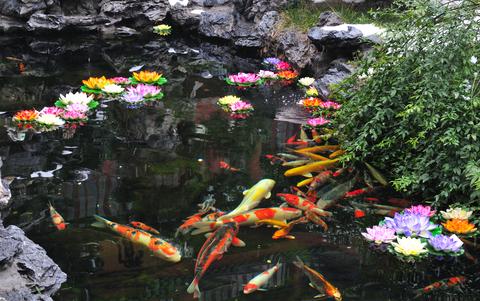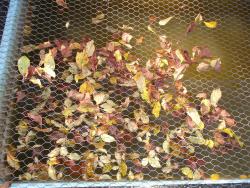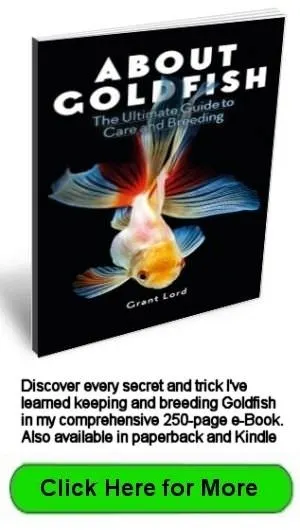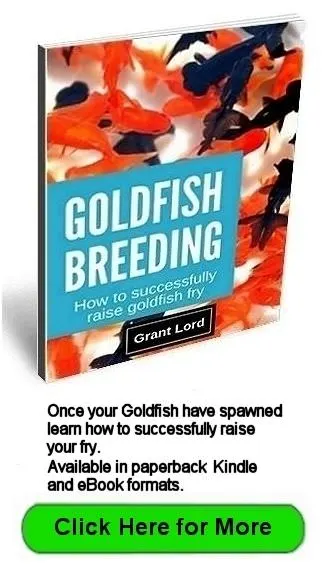- Home
- Ponds
Goldfish Ponds Guide to Design, Location and Maintenance
Goldfish Ponds, especially decorative informal ponds, add beauty and a sense of tranquility to the garden.
Last Updated 07-03-2023 by Grant Lord.
 Decorative informal Koi and goldfish pond
Decorative informal Koi and goldfish pondWhen planning to install or build a pond, the construction method, size, location and design should all be influenced by what the main function of the pond will be.
Ponds are used for a variety of purposes, for example:
- Purely decorative
- Increasing the size of juvenile fish
- Raising fry
- Breeding
- Or a combination of the above.
Pond Design Should Complement The Pond's Function
If a pond will only be used for one specific purpose, e.g. raising fry for their first few months, it will be prudent to select a pond design that makes the job as simple as possible.
If you have limited space, you may be forced to use one pond for a number of purposes. You can still design your goldfish pond so it satisfies some of the more important design elements to make fish management easier. These could include:
- Planting water lilies or aquatic plants in removable containers
- Keeping to a simple round, oblong or square shape
- Using robust materials for the pond’s construction
- Having a deep area for extreme weather conditions and a shallow area for spawning.
The design elements of the ponds assume the ideal situation of having ponds for only one specific function, e.g. raising fry or sizing juveniles. If space is limited you will need to mix and match the design elements for the most important functions you want to use your pond for.
Decorative Goldfish Ponds
Decorative ponds allow the most design flexibility and construction methods, as you are going for a look that suits the setting. They can either be formal with a regular round or oblong shape, or informal with an irregular shape giving a more natural appearance.
The only important design elements are that they are deep enough to withstand freezing temperatures, and the volume of water is great enough to avoid large temperature changes overnight.
Goldfish Varieties Most Suitable For Goldfish Ponds
Any Goldfish variety can be kept in an outdoor pond, but the more highly developed varieties such as Water Bubble Eyes need a pond devoid of any sharp surfaces or clutter.
The most suitable Goldfish varieties for pond fish are the single tailed varieties. These include:
- The Common Goldfish
- The Comet Goldfish
- The London Shubunkin
- The Bristol Shubunkin and
- The Japanese/American Shubunkin.
Shubunkins need some shade as their colors become faded in harsh sunlight whereas the color intensifies in the metallic scaled Commons and Comets.
I haven’t included the Tamasaba which is a deep bodied single tailed variety because of its deep body, but it could be considered if fish numbers are low.
The same rule applies to ponds as it does for aquariums. The more developed varieties such as fantails or Moors should not be kept with single tailed varieties. Competition for food can be managed in an aquarium with few fish, but it is much harder in a pond.
Other fish species such as Rudd, Tench and Koi are often kept with Goldfish, but some species grow very large and out-compete the Goldfish for food.
If any other species of fish are kept with Goldfish, the only Goldfish varieties suitable as tank or pond mates are the single tailed varieties.
Note:
The goldfish ponds described below are for small breeding setups, not commercial. Commercial breeders tend to use very large ponds, do fewer culls (if any) and breed less developed varieties for this reason.
Sizing Ponds
Ponds used to grow juveniles through to adulthood need to be big enough for the job. The pond needs forty eight square inches of surface area for each inch of fish body length.
The fish will be fed quite heavily to maximize growth, so some form of filtration would be beneficial. A filter would also double the number of fish that the pond would support.
Apart from lilies to cut down sunlight, sizing ponds tend to have formal shapes and few if
any objects in the pond making it easier to catch the fish for periodic culling (sorting). Water depth needs to be deep enough to withstand freezing temperatures.
Fry Ponds
Fry ponds are used to grow two week old fry on for the next 2-4 weeks.
Fancy goldfish varieties need to be culled frequently to remove those with faults.
For this reason, fry ponds need to be reasonably small, 80-100 gallons, made of fiberglass or rigid plastic and placed above ground. The preferred shape is square or oblong. These features make it easy to empty them, catch fry for culling, and sterilize for diseases and parasites.
Because of the frequent handling required for fry, the ponds are usually free of clutter that would hinder using a net and are made from materials that will stand a bit of maltreatment. More on this later…
Breeding Ponds
The requirements for breeding ponds are very similar to fry ponds.
The water level would be no more than 6-10 inches deep and the pond would be bare apart from spawning medium.
The pond surfaces must be smooth otherwise the spawning fish will injure themselves.
The Importance Of Location
 Goldfish pond located too close to trees
Goldfish pond located too close to treesWhatever the Goldfish pond’s purpose, consider these factors before deciding on its location:
- Trees. Trees can be used for shading, but if the pond is too close, falling leaves quickly pollute the water or clog filters. Some are actually poisonous to fish. Tree roots tend to track towards water sources. They damage vinyl or polythene liners and can even crack concrete ponds.
- Sunlight/shade. If the pond will receive full sunlight right through the day in summer, some sort of shade cloth or lilies will need to be used to cut down the sunlight. Algae become a problem when sunlight is excessive.
- Flooding/drainage. Don’t locate your pond in a low position for
two reasons, flooding and overflow. In
periods of heavy rain, overflowing water from your pond needs to be able to
drain away without it annoying the neighbors. Think about the possibility of a catastrophic failure
of the pond or it developing a serious leak.
What damage will pond water cause to surrounding property, yours or your
neighbors? The lip of the pond needs
to be high enough to prevent flooding or runoff from surrounding land entering the
pond and with it fertilizers, pesticides, and debris.
- Siphoning. Ideally, a pond should be higher than the surrounding ground. This allows you to siphon water out if you need to empty the pond. The only other alternatives are a bucket if the pond isn’t too large, or pumping.
- Electricity supply. If you plan to run a pump or filter you will need to either run a cable to the pond, or run hoses back to your pump. The closer the pond is to the electricity supply, the shorter the amount of trenching. If the distance to the pond is very long, say 150 feet from the electricity supply, there will be a voltage drop. Discuss your plans with an electrician to ensure the correct cable size is used.
In-Ground Or Above-Ground
After deciding on the location of your pond, the next decision will be whether it will be placed in-ground, above-ground or somewhere in between.
Apart from the convenience of an above-ground pond, the biggest advantage is the ability to siphon pond water out easily.
An in-ground pond needs to be located at the highest point in the garden or have some nearby ground lower than the deepest part of the pond to aid siphoning.
Larger in-ground ponds should have a deep area that allows most of the water to be removed by siphon hose.
In-ground ponds should be ones that you aren’t planning on emptying very often. Decorative ponds would fall into this category. Ponds that require frequent emptying such as fry ponds are better placed above ground.
The next decision after location and placement is the construction method. The construction method is influenced by price, pond use, skills and the required speed of construction. Read more on goldfish pond construction methods...
Once the major decisions regarding pond location and construction method have been decided, the Goldfish Pond Setup page goes into some detail about what equipment you may want to install to make maintenance easier.
The page also discusses the use of substrate and growing plants in a pond.




